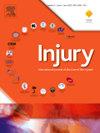Prediction of psychological continuing health problems based on types of injury and manner of accident in Mozambique: A population-based analysis of burns, fractures, internal injuries, and wound injuries
IF 2.2
3区 医学
Q3 CRITICAL CARE MEDICINE
Injury-International Journal of the Care of the Injured
Pub Date : 2025-03-20
DOI:10.1016/j.injury.2025.112274
引用次数: 0
Abstract
The long-term effects of injuries have significant implications for forensic practice. There is a dearth of research highlighting long-term psychological problems resulting from various injuries in under-researched populations like Mozambique. This study employed multiple logistic regression analyses on the 2022–2023 Mozambique Demographic and Health Survey (DHS) data to determine injury types predictive of emotional trauma, limb function loss, and chronic pain as continuing health problems. The data from the Accidents and Injury module was used for all participants. The injuries analyzed included broken bones, wounds, internal injuries, and burns. Additionally, we investigated the predictive capacity of unintentional and violent injuries on emotional trauma as a continuing health problem. The total number of injured people (whether due to traffic or non-traffic accidents) was 419. The proportion of unintentional injuries was much higher than violent injuries (86.4% vs 7.7%). Our results indicated that burn injuries were strongly associated with emotional trauma (Odds Ratio (OR) = 4.15, 95% CI: [1.24-13.84], P = 0.021), broken-bone injuries predicted both limb function loss (OR = 2.67, 95% CI: [1.17- 6.09], P = 0.02) and emotional trauma (OR = 3.73, 95% CI: [1.51-9.22], P = 0.005), internal injuries predicted chronic pain (OR = 2.52, 95% CI: [1.18-5.38], P = 0.018), and violent injuries predicted emotional trauma (OR = 4.41, 95% CI: [1.16-16.67], P = 0.03). These findings enhance comprehension of how injury types predict long-term psychological complications in Mozambique and provide valuable insights regarding the enduring consequences of various injuries in similar populations.
求助全文
约1分钟内获得全文
求助全文
来源期刊
CiteScore
4.00
自引率
8.00%
发文量
699
审稿时长
96 days
期刊介绍:
Injury was founded in 1969 and is an international journal dealing with all aspects of trauma care and accident surgery. Our primary aim is to facilitate the exchange of ideas, techniques and information among all members of the trauma team.

 求助内容:
求助内容: 应助结果提醒方式:
应助结果提醒方式:


